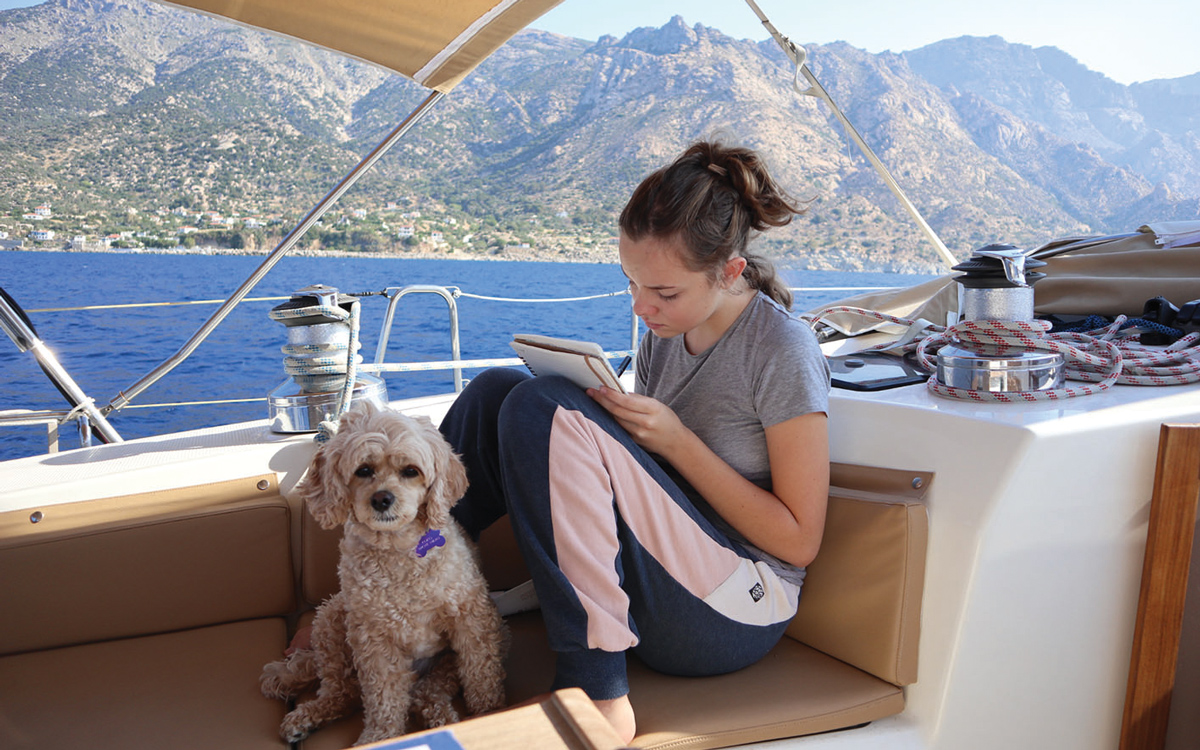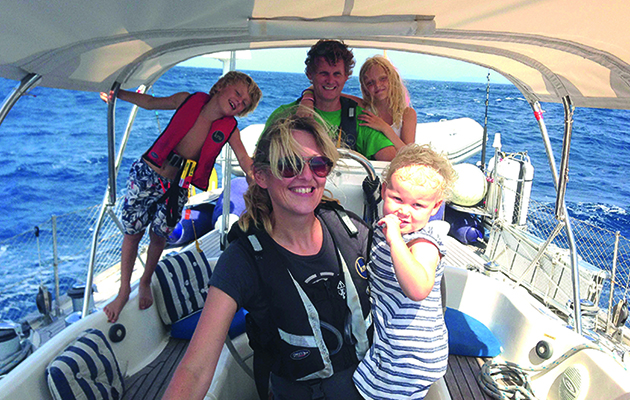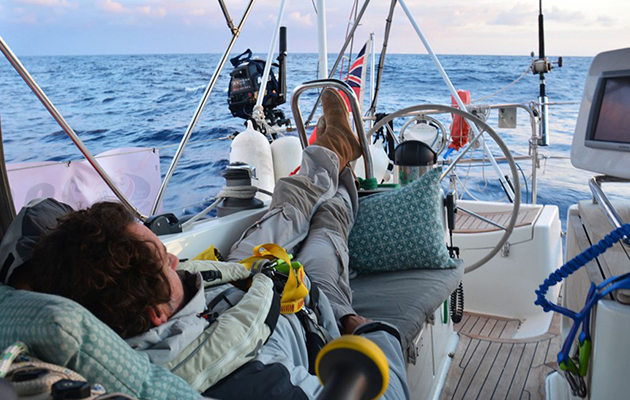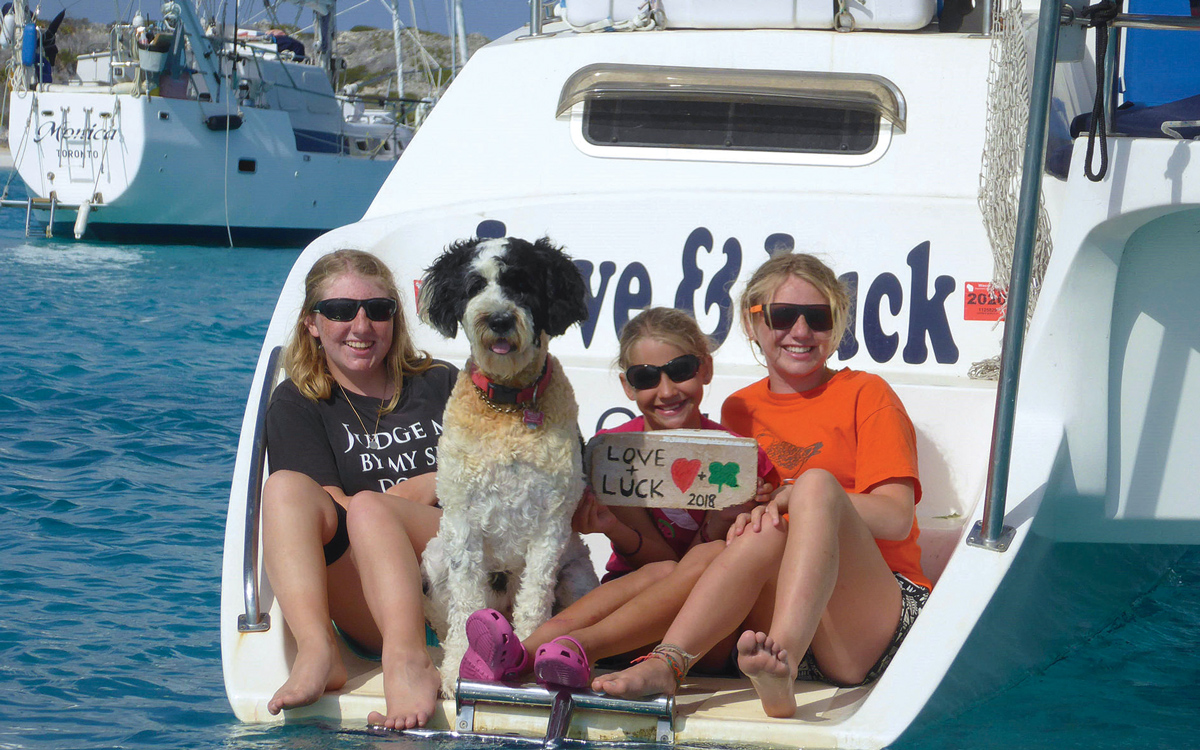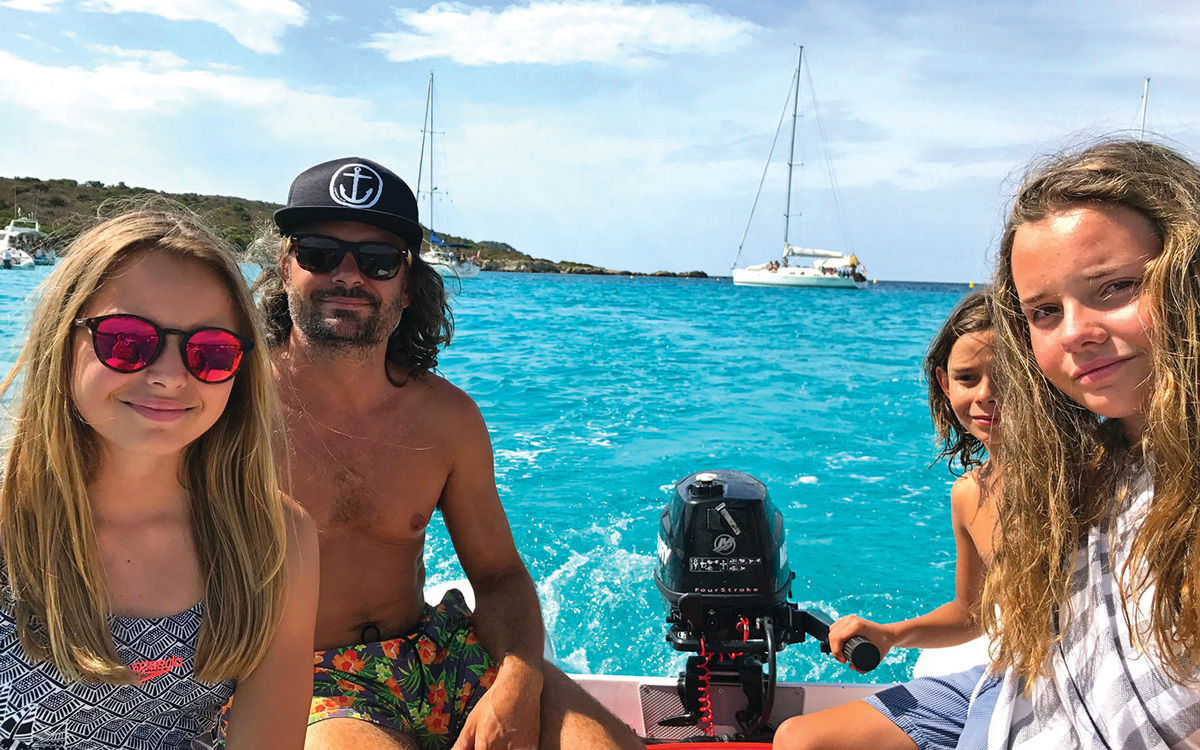Behan Gifford speaks to six families about how they make sailing with teenagers work for them
Sailing with teenagers. Did that thought prompt you to wince or shake your head? Conventional wisdom steers many long-term cruisers to sail home before kids start high school — or delay going at all until the nest is empty. But our experiences, and those of others who have done it, have shown the many rewards of liveaboard cruising with older children. Here, more than half a dozen of those families share some insights on how to make it work.
Teenagers are rarely excited at the prospect of going cruising; typical reactions to the idea range between caution and being upset. It may be daunting to know that most teens are reluctant, even though nearly all teens we’ve spoken to felt positive about cruising after adjusting to the lifestyle. How can your family get to that point without too much stress?
Many cruising families are on social media and their posts can give teens real-world vignettes of what living aboard can offer. Prior to departing Cornwall on their 63ft steel ketch Sea Lion, the Redhead family watched video blogs by Sailing Zatara, another family of six.

The Robbins family collected their 50ft Bavaria Nikau from Sardinia and are vlogging as they sail her home to New Zealand
Before setting out on Sea Lion, 14-year-old Momo faced negative reactions at school; Momo’s mum Tor said being asked tricky questions from her friends who couldn’t imagine what life on a yacht would be like wasn’t helping.
“[Watching Sailing Zatara] really helped the kids visualise life aboard and enable them to answer questions from their friends.”
Often, it just takes time and perspective. “Naomi, my 14-year-old, loved school, loved her friends and life in New Zealand; as far as she was concerned, we were ruining her life,” said mum Jaz from the Bavaria 50 Nikau. “The game changer was when we went home [after six months] and her friends pretty much ignored her,” Jaz reflects.
Naomi has taken a very mature perspective on it: “I can now see how important it was for me to go back, to learn that it was not my world that moved on, but that I had moved on, experienced new things. I returned to the boat excited for what was ahead and with a totally different outlook.”
To ease pre-departure wobbles, consider offering compromises, such as an open door for friends to come and visit, a trip home after six months, or a promise that the whole family will reassess after a year.
Listening to your teens’ concerns sets an important tone: their feelings about the family’s plans are being taken into consideration. This doesn’t mean letting them call the shots, but respecting their opinion and making an effort to understand their needs.
Article continues below…
How this family made their two-year round the world sailing dream happen
Surreal. Not a breath of wind tonight. The sea’s surface is flat and unbroken. The sky is utterly cloudless and…
How much does it cost to sail around the world? The real costs of liveaboard cruising
Two years ago my partner Nick and I set off from the UK to fulfill our dream of sailing around…
Private space
Teens are nearly unanimous in voicing the need for a space they can call their own, and retreat to when they need privacy.
When considering boats to go cruising, a key reason we purchased our Stevens 47 Totem instead of staying with our Hallberg-Rassy 352 was the three-cabin layout. The additional cabin afforded the space to sail into our kids’ teen years, as we hoped. Sharing a cabin with a younger sibling can work, but more often tension stems from shared cabin arrangements.
This doesn’t mean you’re relegated to catamarans or an overly large boat; monohulls under 50ft can come in four-cabin configurations. A curtain on a pilot berth probably isn’t enough.
Finding community
Teens need peers, but as there simply aren’t that many teenagers in the cruising community it makes finding friends more complicated. Two key principles help. First, accept that finding and connecting with boats with teens is a parental responsibility.
Research online to find families and seasonal hubs, and reach out in advance. Second, keep plans flexible. Avoid having a schedule: if your teen hits it off with a new friend on another boat, be willing to adjust your itinerary on short notice.
Waiting to find other kid boats organically is a set-up for disappointment. It’s especially difficult in the Mediterranean; routes vary, making meeting other family boats challenging. The Vesna crew learned that the hard way. “The first year on the boat was extremely lonely. We really struggled to find liveaboard families in the Mediterranean,” says mum Julia.
Yannick, 17, and his brother Jaris, 14, have been cruising from the Mediterranean through the Canary Islands the last couple of years on the family’s 45ft ketch Ponyo. Their mother Rike underscores the point: “We go out of our way to find other families with kids the same age and stay longer in places when we are successful.”
Julia took proactive measures the following year to ensure company for her kids at their choice location for overwintering, the Marina di Ragusa in Sicily. “We campaigned heavily to get a lot of boat kids at the same marina. This effort paid off because last winter we had 23 kids and this winter there are almost 20.”
Staying connected
Parents who didn’t grow up in an internet-driven world don’t always appreciate the role it plays in our kids’ lives; many families struggle to keep screen time in balance. It’s a bigger deal for most teens at the outset of cruising as they adjust to less predictable connectivity.
But teenagers do adjust and while social media remains important for most of them, the way it integrates in their lives shifts. Rather than being a vehicle for self-validation or peer issues, the primary role of social media instead becomes about maintaining friendships with others they meet along the way as well as long-term friends from back home.
Since it’s hard to get too immersed when internet access isn’t predictable, social media ultimately has less negative influence on their everyday happiness.
The Sophie crew has been cruising since 2012, and recently sailed in company with a number of new cruising families from the US east coast to the Caribbean. Now that the boats are in the islands, mother Jenna comments: “They’re easing back into our normal tropical routine, and it feels like friends who are new to cruising are learning how to unplug more.”
Her 14-year-old son Leo has a phone with voice calls and text capability, but no data. “It has a few games on it but his primary usage is listening to music.”
Some teens we met had set up dedicated Instagram accounts to keep in touch with friends back home and share their adventures. Like many boat teens, Vesna’s Declan doesn’t have his own phone, but he has access to a ‘boat phone’ to connect with friends on Instagram and Facebook.
“It’s important to stay in touch with my friends because otherwise cruising would be rather boring on some occasions,” says Declan. “There seems to be a larger quantity of younger kids cruising, in the Med at least, and while it is fun to spend time with littler kids, it is also good to spend time with or just stay in touch with other kids my age.”
Education
Homeschooling a teenager and exam preparation intimidates many parents so much they avoid trying. None of us can be experts in all subjects needed, but we don’t have to be. Those taking the plunge generally agree that, by this stage, parents are more like coaches than teachers.
On the 37ft catamaran Love & Luck, the family planned for a two-year sabbatical. For 15-year-old Heidi the academic priority was staying current with the curriculum used at home to ease the transition back upon their return.
“To keep on track, I put together a monthly overview of the school year by subject. Heidi and I review it together at the end of each month, so she knows where she’s behind or ahead and can be part of the planning process of how to catch up/stay on track,” says parent Lucy.
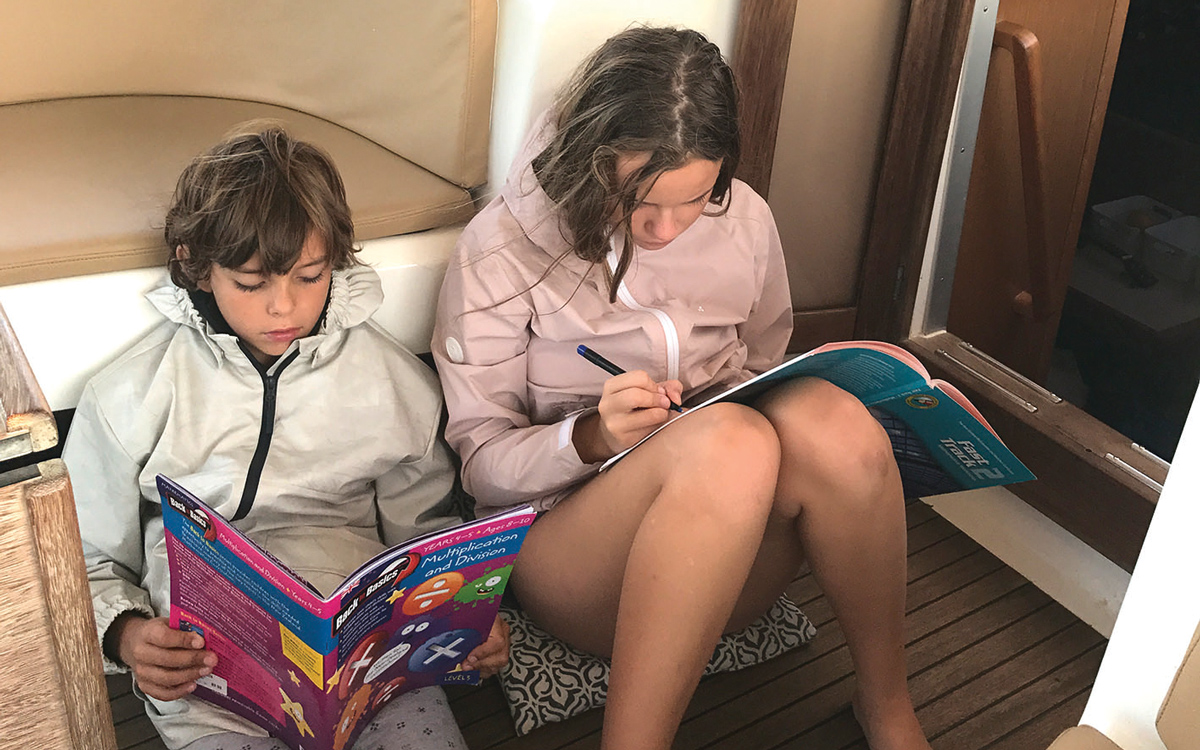
The Robbins do three hours of home schooling per day, following a New Zealand curriculum correspondence course
The unknowns of preparing for university feel daunting, but are surmountable. On Totem, our son Niall’s first school exams were the SAT and ACT, the USA’s standardised tests for college applications. Our eclectic homeschooling approach didn’t hamper applications.
After ten years cruising, Niall just finished his first semester at a competitive college and is doing well academically. Other families appreciate the security of an accredited distance-learning program for high school years, which takes some guesswork and stress out of the equation.
The case to go
While most cruising families opt to go with younger children instead of teens, choosing to go with a slightly older family brings rewards – and not just because there are more hands to stand watch. More than one admissions officer indicated our son’s unusual life experiences gave him an edge over a broad field of excellent but not very differentiated applicants.
At a stage when many families can descent into conflict or disengagement, cruising also fosters close bonds. Reflecting years later on taking their teens cruising, Jon Nofziger from the catamaran Tookish agrees: “The impacts have been long-lasting and wonderful. We are as close a family now as ever, even though marriages, moves, and careers have all taken place. It was truly life-changing.”





